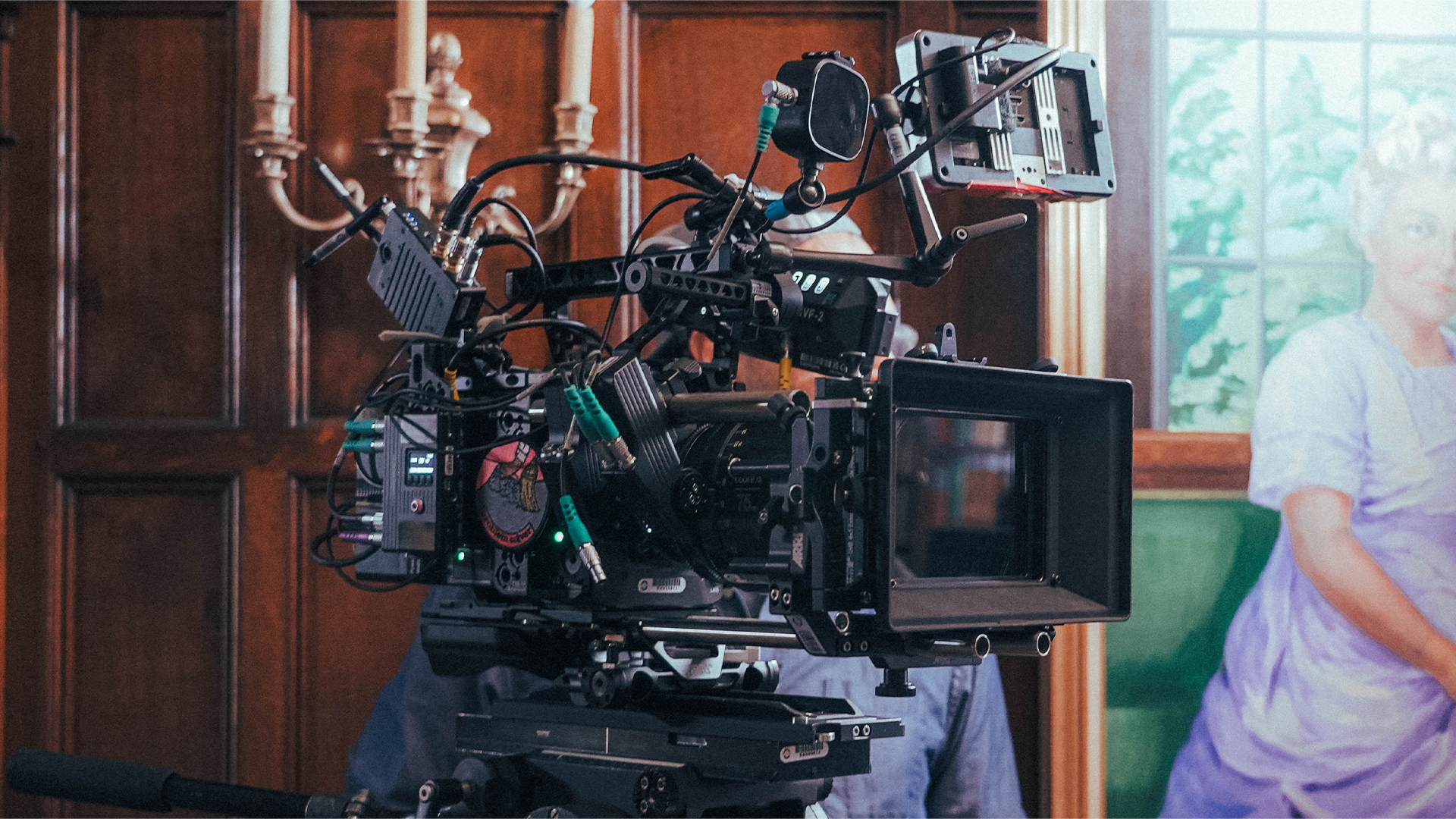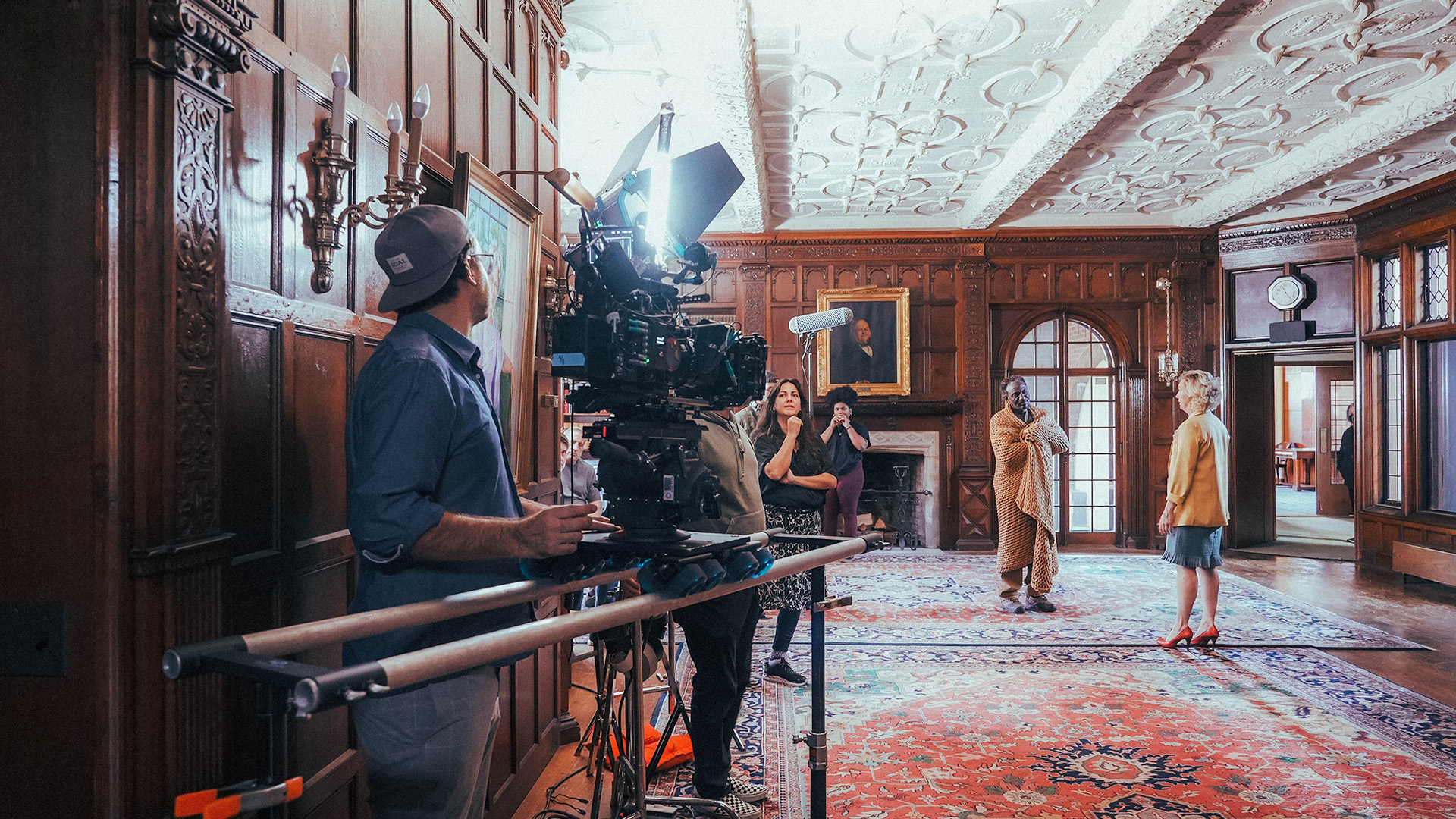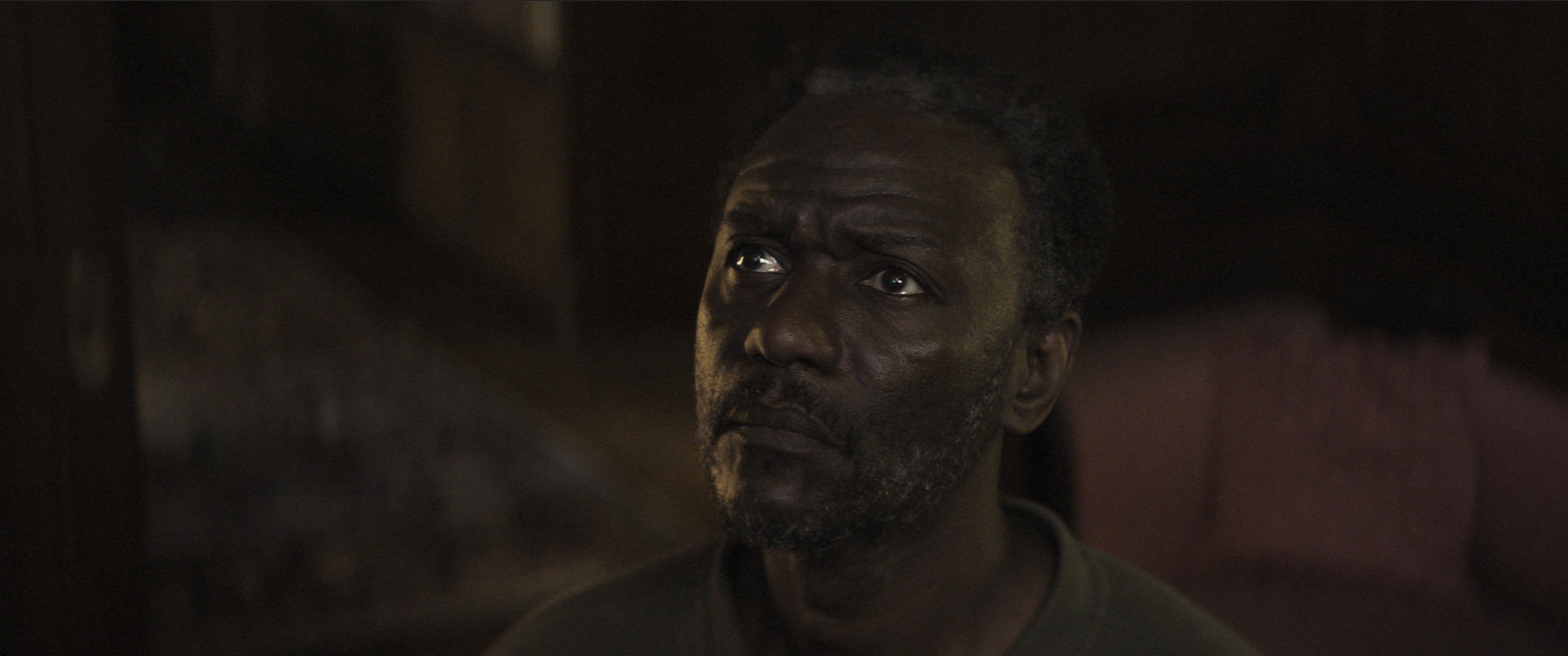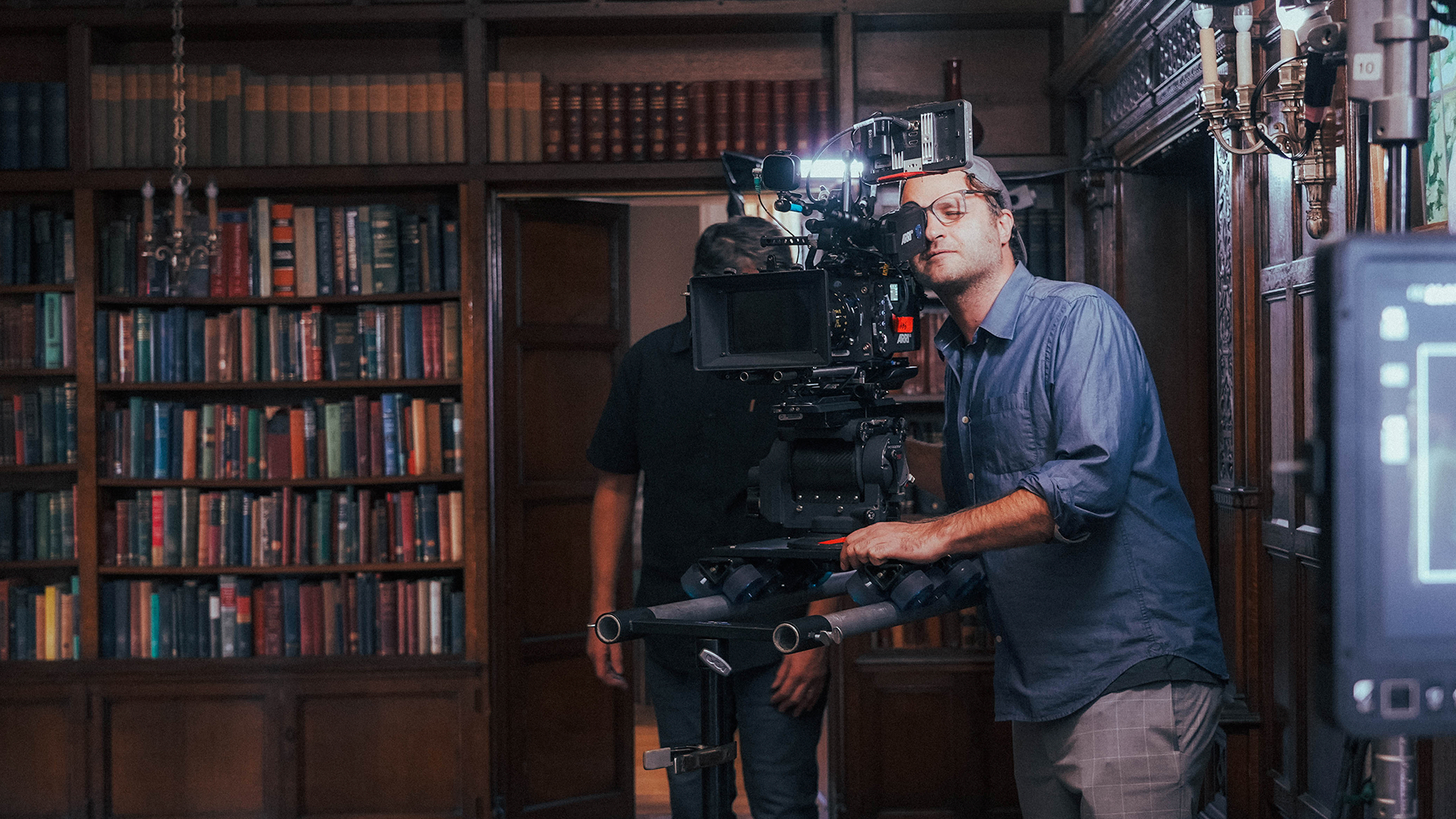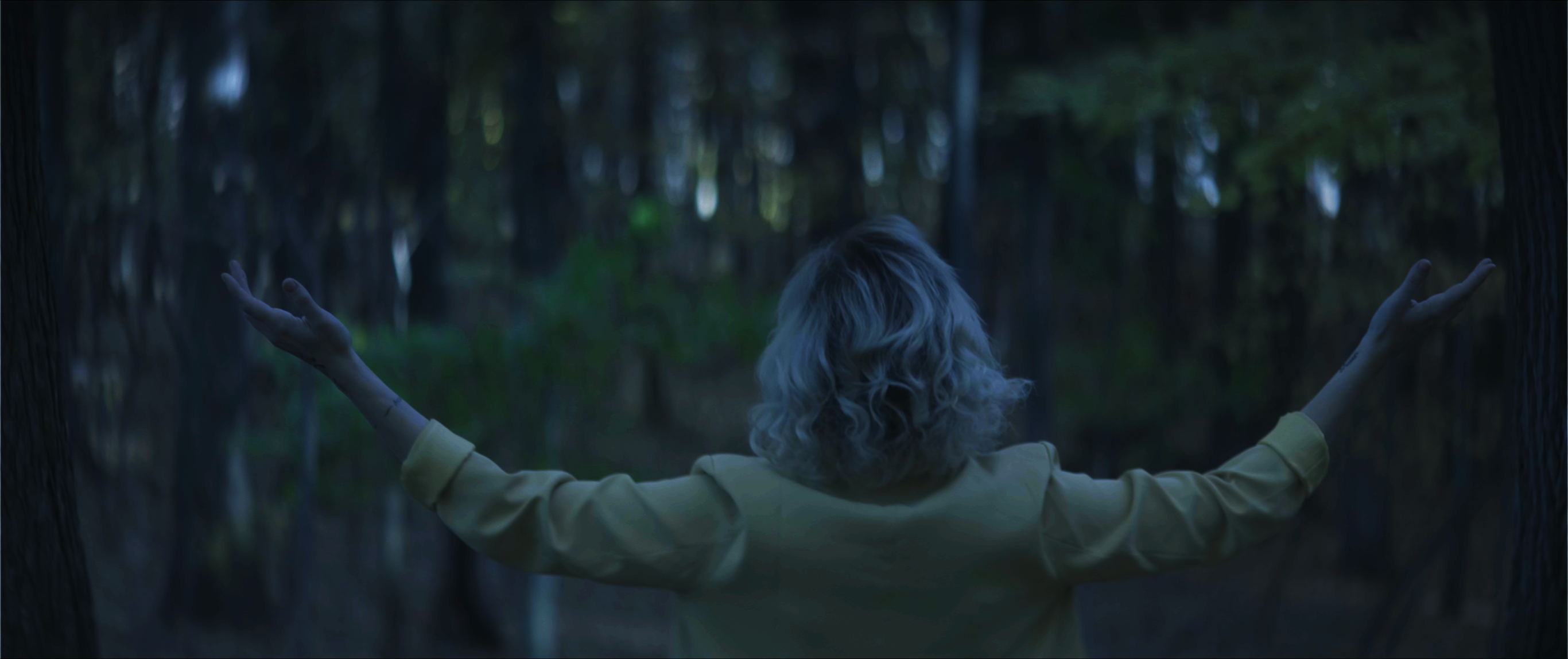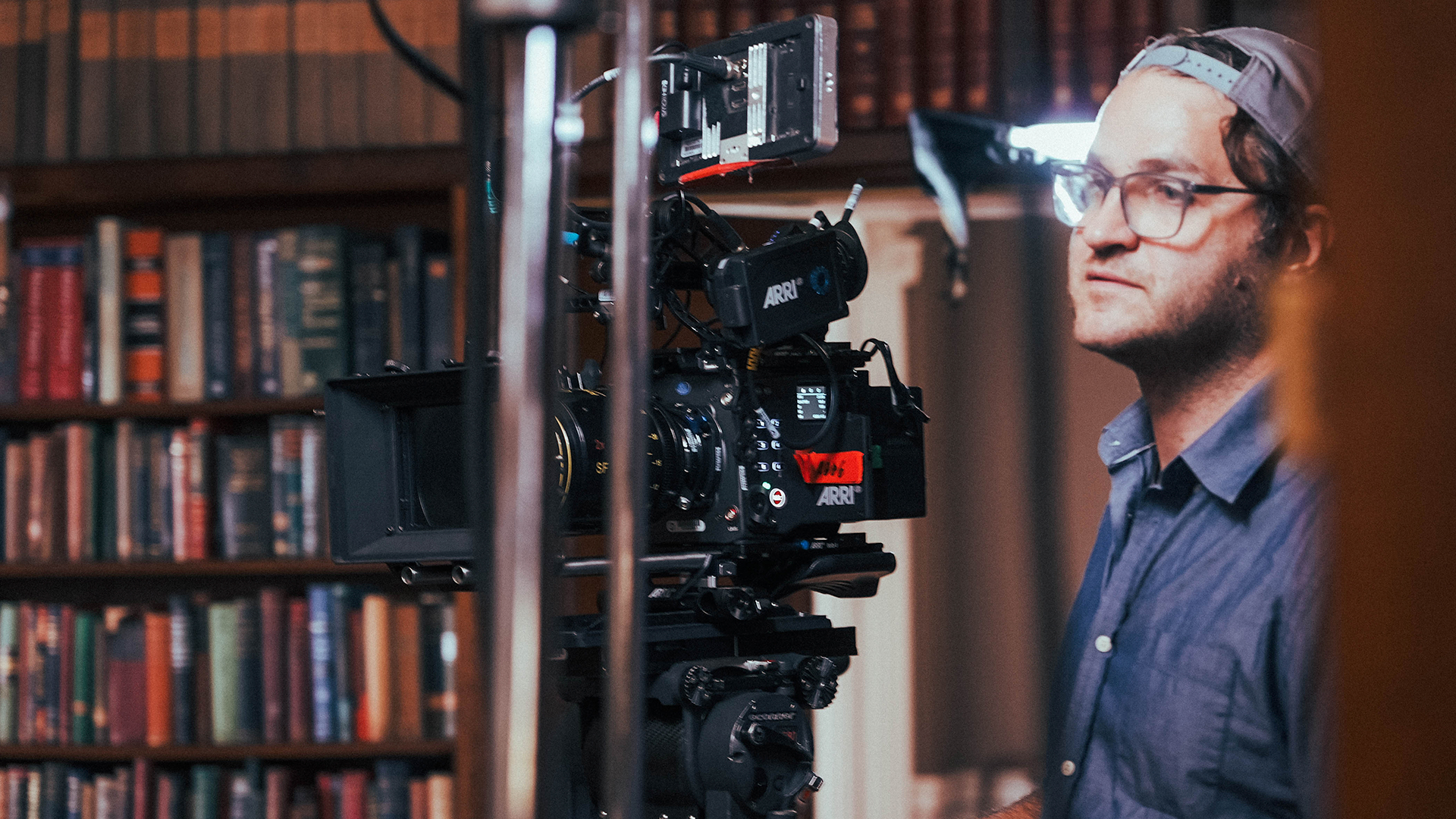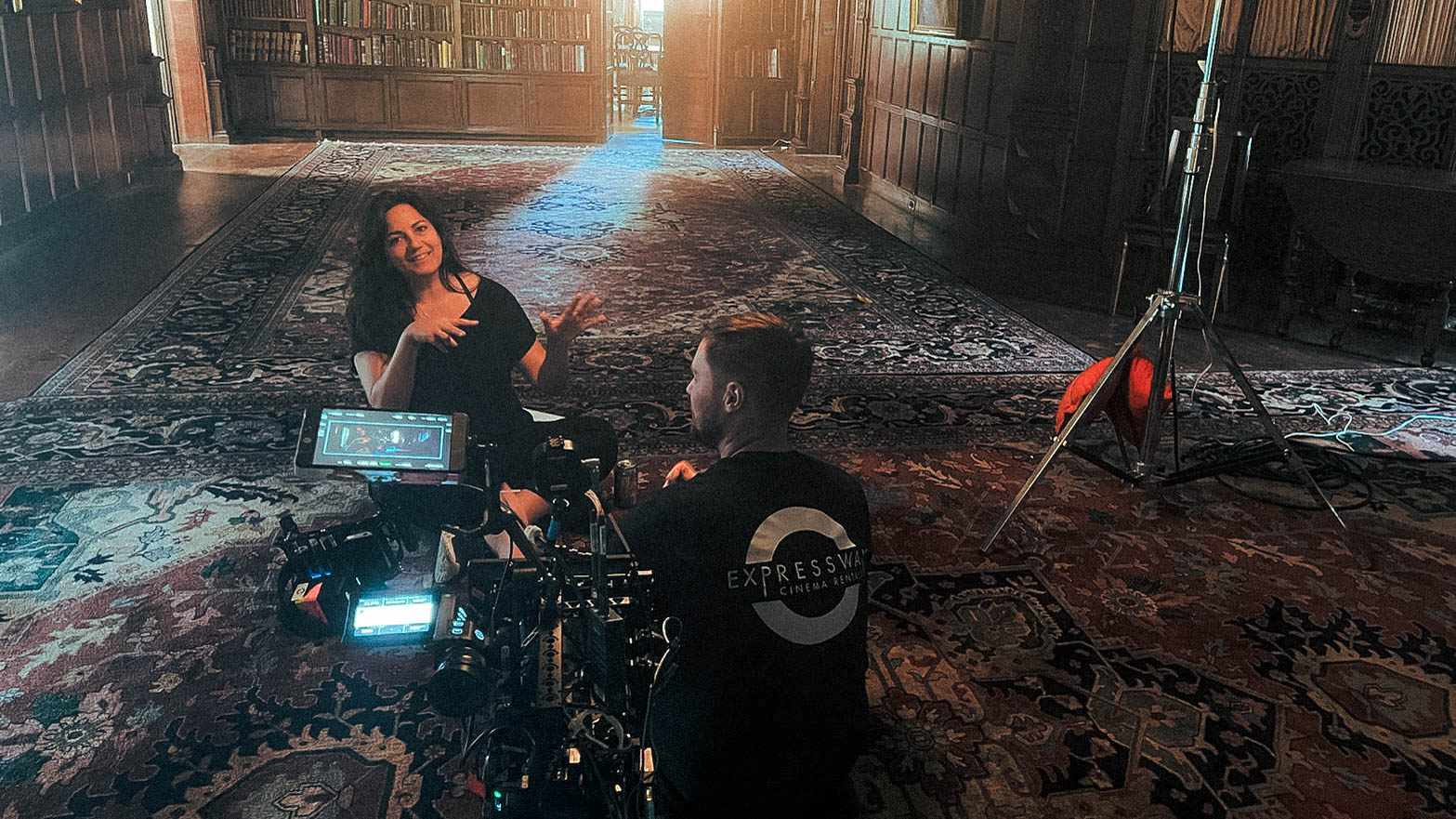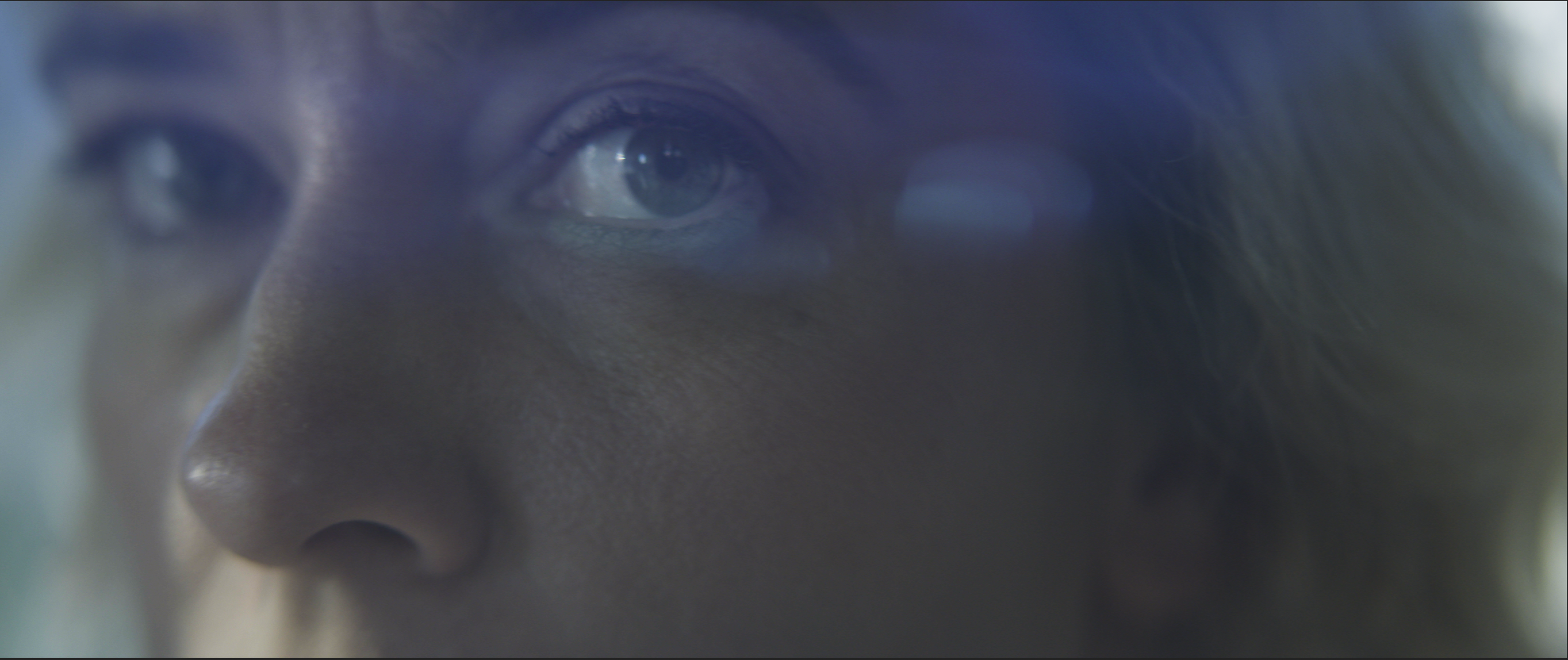Q&A With Vashti Anderson and Shlomo Godder
From NYU’s graduate film program to releasing award-winning films, Vashti Anderson and Shlomo Godder have impressive resumes of films shot as individuals and as a director/cinematographer duo. Their latest collaboration, Daruk, centers around the titular character, a Caribbean man, and explores strong cultural themes close to director Vashti Anderson’s heart. Godder and Anderson elected to shoot Daruk in Rochester, NY, with support from Expressway Cinema Rentals.
While Daruk is still in production, the duo recently rented Expressway’s Arri Alexa 35 package (one of the first productions in town to do so!). We spoke with the team about their impressive film backgrounds, working with the Arri Alexa 35, what themes inspire them to create, and more!
Q: Can you tell me a little about your film background?
SG: I grew up in New York City. As a young person, I dabbled in graffiti and photography. I was always a movie buff and studied literature and art history during my undergrad. After college, I started working on film sets and, for a couple of years in post-production. Having never gone to art school, I finally decided to attend graduate school at NYU. While there, I worked professionally as a DP and director on commercial projects and music videos for 50 Cent, Ghost Face Killah, and Mobb Deep, amongst many other artists. At the same time, I was shooting films for my classmates at NYU and directing my own. That was a turning point for me. I realized that my true passion in film is in the narrative realm. From then on, I shot narrative features and some docs, TV shows, and commercials. I won awards, including best cinematography, at Tribeca Film Festival for the film Una Noche directed by Lucy Mulloy and Produced by Spike Lee. I love great collaborations and working with my film community. Also, I value working with new collaborators and forging friendships with people who might last for a lifetime while exploring new frontiers, whether a director’s unique perspective or shooting in a place I never imagined I would see. That’s what’s most exciting for me about being a DP.
VA: I realized I wanted to be a director in high school when I wasn’t cast in anything but was given the opportunity to student direct as a sort of concession. Everything clicked. I majored in film in college, moved to NYC in 1997, and crewed on independent feature films and TV shows. After a few years of constant crewing, I went to NYU’s graduate film program, where I shot and cut on film. I graduated with an MFA. My thesis film, Jeffrey’s Calypso, was shot on super 16mm and blown up to 35mm print. Going through this process taught me a lot. The film won grants and awards, played in national and international festivals, and got a distribution deal, as did my feature, Moko Jumbie. Part of what motivates me to tell stories is that my experiences were invisible in the films and TV shows I grew up with. As a Trinidadian-American woman, I have my own stories to tell, and they are by no means the only stories of a person with my background. But my strong investment in representation pushes me forward. Being an independent director is so hard, but I can’t live without it.
Q: Is Daruk your first time collaborating on a film together?
SG: I shot Vashti’s feature film Moko Jumbie a couple of years ago in Trinidad & Tobago. We shot it in a small fishing village on the southernmost tip of the island, a place that few people see as it’s not a tourist destination. Working with Vashti was a dream come true. I remember watching her short film Jeffreys Calypso while attending NYU with her. I thought, wait, people can do that? What excited me most was Vashti’s unique perspective and aesthetic as a writer/director. She is fearless with her nuanced storytelling approach and ability to give her community a voice. The film went on to play in many festivals around the world and received great acclaim.
VA: We both came out of NYU’s Graduate Film Program and had professional experience in NYC prior to graduate school, so we had the education and understanding of cinematic language to collaborate well together right off the bat. On Moko Jumbie, it was great working with a DP who had never been to Trinidad and was looking at it with fresh eyes. Shlomo also has the ability to be open to new discoveries along the way. Working with him again, we could reference our previous work together to discuss similar and different artistic choices. We each have our own artistic eye, but good communication is key to strong collaboration.
Q: Your latest project is Daruk. Can you tell us a little bit about the concept? Give us your elevator pitch.
VA: Yes, Daruk is the current title. While writing the screenplay, I felt inspired by the natural elements and this region’s violent but beautiful changing seasons. So, I wrote the story to take place over different seasons. Since we are not done shooting, the concept is still under lock and key. But, I can say that Daruk, the title character, is a Caribbean man, and there are strong cultural themes. My culture has always had and continues to have a strong influence on my creative work. In this film, as with my past film, Moko Jumbie, the story engages with elements of magic realism. It is a story that is both specific to this region and universal.
Q: Some directors choose to have more of a direct say on equipment choice and looks, while others decide to provide the creative big picture and leave the equipment decisions in regards to look to their DP. As a director, what input did you want regarding the camera and lens choice to service your project?
VA: I’ve made (and edited) films on Kodak, Fuji, and digital formats. I understand and appreciate what each has to offer. I also understand that it’s the creative collaboration and the discussions about how to use the format to support the story that ultimately matter. Shlomo has an incredible understanding of transitions and visual emotional movement. When I found out that there was an Alexa 35 at Expressway, I was excited. I’m always up for new experiences in filmmaking. Before we shot the first frame, we looked at references and had extensive creative discussions about the look of the film, how we wanted to use the light in each location, and the story’s themes. We talked about aspect ratio and lenses and decided that shooting anamorphic would be right for the story.
Q: You elected to shoot Daruk on the new Arri Alexa 35. What brought you to that decision? What benefits did you encounter when using the Arri Alexa 35?
SG: Like any DP out there, I have been waiting for years to shoot with Arri’s new sensor. And after seeing some of the promotional material shot with this camera and hearing the general buzz in the film community about the Alexa 35, I got super psyched to finally get my hands on it. A bonus was having a workshop with a representative from Arri up here in Rochester at Expressway. Having the representative and Expressway owner, Zac Rubino, here to take me through the menus gave me a more in-depth understanding of what the camera is capable of. It was an added incentive to lock this camera down for my next shoot. Vashti and I looked at the anamorphic glass and decided on shooting with the Cooke SFs. I had shot with them before, and based on Vashti’s references and many conversations we had, we thought that the Cookes and Alexa 35 would be a great fit for Daruk.
Q: Was there a learning curve when you started working with the Arri Alexa 35 on the set of Daruk? What is one thing you wished you had known before shooting on this new camera system?
SG: Yes, there was somewhat of a learning curve. Mainly with the Texture options. Luckily, I got to mess around with the different settings at Expressway on a couple of occasions. It was great because Expressway sometimes feels like a lab. It’s a small but extremely enthusiastic film community here in Rochester/Buffalo/Syracuse. Zac would chat with me about different features and new technologies whenever I came in. Then an Expressway employee or an AC at the adjacent checkout bay would chime in. I love that. When we put up the monitor, it was interesting to see the difference between the different texture options. After testing with Zac, I realized that these could be used as you would film stocks, each having its own density and grain characteristic. When shooting film, I often shot different scenes on multiple stocks. I decided to take on this approach when shooting Daruk. On a scene where we shot Day for Night: I lowered the ISO to create a slightly less dense image, then I applied the Cosmetic Texture setting, which softened the highlights. I also changed the color temperature to cool off the sunlight, so it reads as moonlight. Then I closed down the aperture. I don’t know if I will need much more work done in post to make it convincing, but for now, it looks legit.
Q: In the current industry product landscape that is saturating itself heavily in the full-frame format, does having a new camera like the Alexa35 that focuses more on pixel quality over quantity affect your creative decision?
SG: There are different cameras for different needs. It’s not a one-cam approach – just like it should never be a one-film stock or one-lens approach. I was very happy about the specificity of what the Alexa 35 offers. First, its ability to handle the highlights like no other digital camera available today allowed me to feel confident about shooting on a bright, contrasty day and embrace those elements rather than trying to mask them or wait for a perfect cloud to cover the sky. At times when I would’ve used a soft ND grad filter to take down the sky, I felt good about leaving it clean. It’s often a dilemma when shooting a horizon busy with trees and hills, especially when the camera is moving. I felt very confident about doing certain things to push the camera’s capabilities and create different looks. There are still instances where full-frame cameras are better suited. Ultimately having more choices allows a DP to diversify the aesthetics they create for a given project. The Alexa 35 is a creative tool that I will be able to use very often on many projects that vary in creative approaches.
Q: How has Expressway been a resource for you during your productions?
SG: Expressway was a great resource for us. First, they are so close by and available whenever needed. Most of their equipment is pristine and glitch-free. It’s a rental house that does well with quality control. They are prompt, reliable, and extremely client friendly. Not to mention that it’s great to have a rental house so close by that feels like a lab. The moment we stop learning, we become irrelevant.
Q: What brought you to Expressway in the first place?
SG: I was shooting a TV show, “Blowing Money Fast,” in Atlanta. The producers had difficulty finding locations, so I suggested they shoot some of it in Rochester. I had met Zac a couple of months prior and asked him some questions about shooting up here. He helped with so much that it was way beyond just getting us gear. The shoot was very successful, and the producers were super happy. Since then, and even on away shoots, I often use Expressway as my go-to rental house.
Q: Rochester has a rich history in film full of talented creators. Please tell us a little bit about the Rochester creative community and what it means to you.
SG: I have always been intrigued by Rochester’s rich history of innovation in motion pictures. Kodak is here. I love shooting film and specifically using Kodak stock. Rochester-based Bausch and Lomb produced one of my favorite sets of lenses: the legendary Baltar and Super Baltar lenses over 60 years ago. Today we are here along with other enthusiastic filmmakers, and it feels like we are a part of a thriving film community. That is very exciting. I am very fortunate to be in the region and continue to work with the talented people that are up here in the region.
Q: What does it mean to have a resource like Expressway in Rochester?
SG: Expressway being up here gives the younger generation a good place to enter the industry. It serves as a community hub and has an educational resource they would be hard-pressed to find elsewhere. For people who have been around, it gives them the tools they need to do a professional job and allows them to endorse the region as a full-on production destination confidently.
VA: Aside from being a filmmaker, I am an Assistant Professor in the School of Film and Animation at RIT, and my academic position requires me to make films. In addition to the resources at MAGIC Spell Studios, having Expressway as a resource was a pleasant surprise. I can make films locally. I don’t have to move productions to NYC or use resources from elsewhere. That is huge in terms of production support.
Q: What is one piece of advice you would give a filmmaker about working with a rental house?
SG: The rental house serves as a community center and a place where filmmakers can gain technical knowledge and access the artistic tools at their disposal. I encourage filmmakers to reach out and use the opportunities they have at workshops or other engagements to gain knowledge that can be useful for them as they make their films. I used to work at CSC Arri in NYC when I was starting. It served as a place where I gained technical knowledge and access to professionals. So, for me, rental houses are the pillars of our film community.
Q: Any other projects coming down the pipeline for you?
SG: I just completed shooting a commercial campaign that took me to Capetown, South Africa, Leticia, Colombia, and Chicago. Currently, I’m set to complete filming of Robber’s Roost, a snowbound western set in the mountains of Utah, as well as the remaining legs of Daruk.
VA: I’m gearing up for the seasonal winter and spring shoots for Daruk, and I have two completed feature scripts in the pipeline, which I’m considering shooting in the Rochester area as well.
To keep up with Anderson and Godder’s projects check out: shlomogodderdp.com
Daruk Crew Credits:
Director: Vashti Anderson
DP: Shlomo Godder
Producer: Anthony Pacella
1st AC: Brett Roedel
1st AC: Mike Thompson
2nd AC: Mandy Hebblethwaite
Gaffer: Bart Durkin
Gaffer: Chuck Moran
Key Grip: John Fazackerley
Sound Mixer: Dan Leahey
Key PA: Carolyn Sicurella
